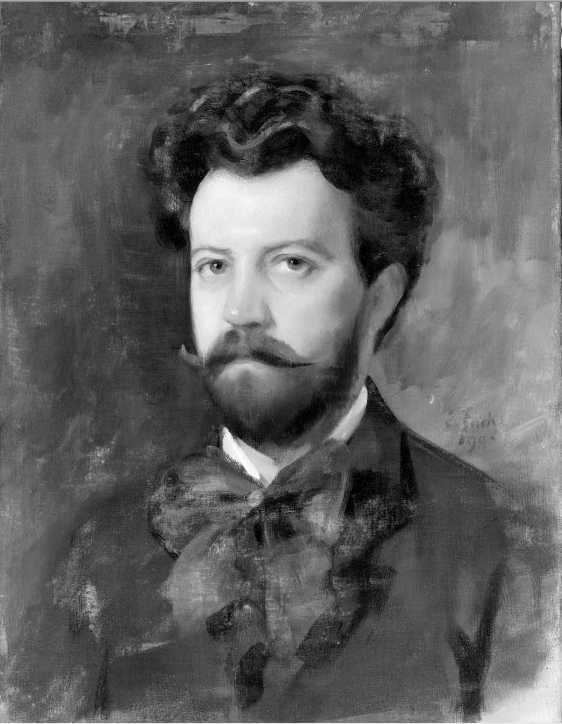Name Emil Fuchs | Role Author | |
 | ||
Died 1929, New York, United States Books With Pencil, Brush and Chisel: The Life of an Artist People also search for Sergio Nasca, Piero Chiara, Achille Brugnini | ||
Emil Fuchs, MVO, (9 August 1866 – 13 January 1929) was an Austrian and American sculptor, medallist, painter, and author who worked in Vienna, London and New York. He painted portraits of Queen Victoria and Edward VII and was fashionable among London high society in the early 20th century.
Contents

Austria, Germany, Rome
He was born in Vienna on 9 August 1866. During his years in Austria, Germany and Rome he was a sculptor and medallist who eventually began to study painting as well. He studied at the Academy of Fine Arts Vienna under Edmund von Hellmer and Viktor Oskar Tilgner. He then attended the Prussian Academy of Arts in Berlin where he studied under Fritz Schaper and Anton von Werner. From 1891 to 1897 he was in Rome, having won the German Prix de Rome in 1891. While in Rome he had an affair with Elvira Fraternali; this is referred to in the film D'Annunzio. He had a sister Renee, and was brother-in-law of Gustav Freytag.
England
From 1897 to 1915 his address was in London where he regularly met with the artist Lawrence Alma-Tadema. He had been mainly a sculptor and medallist, but he began oil painting, especially portraiture in oils, in 1897; his early mentor was John Singer Sargent. He exhibited works at the Royal Academy of Arts in 1898 and he taught there. He worked on commissions including portraits for Queen Victoria and Edward VII, and his portraits became fashionable among various patrons from the aristocracy and high society. He was honoured with the Royal Victorian Order (MVO) in 1909. While in England he was employed by the Birmingham Mint. By 1905 he had been teaching at Paris, Berlin, Munich, Vienna, and Rome and was making winter trips to the United States.
United States
Fuchs began going to the United States in 1905, primarily to paint portraits of wealthy socialites. In 1915 during World War I, "a wave of anti-German sentiment" swept England so, to escape it he moved permanently to New York, producing more works there and offering assistance with the war effort. He became a US citizen in 1924. He had surgery for cancer in 1928, and in anticipation of a death with great suffering he shot himself at the Hotel des Artistes in New York on 13 January 1929. His will created a foundation which put his art on view as a permanent exhibit, and for this he left $500,000 plus artworks to the public.
Artwork
During his career in Vienna, Berlin, Rome, England and New York he created portrait busts, figurines, memorials, medals, oil paintings and other works of art. Collections of his work are held at the Brooklyn Museum, the Metropolitan Museum of Art, the Thomas J. Watson Library and the Library of Congress.
Exhibitions
Between 1898 and 1902 he showed fourteen works over seven Royal Academy summer exhibitions. This included busts, figure groups, figurines, medals, and marble and bronze plaquettes. In 1898 he exhibited marble busts of Lady Alice Montagu and Mr Carl Meyer at the autumn exhibition in the Walker Art Gallery in Liverpool. In 1900 at the same gallery he exhibited a portrait of Arthur W. Pinero and a bronze sculpture called Grip of Death, and in 1901 a bronze head. In 1901 at the RA summer exhibition he showed a case of medals including "portraits of Her late Majesty Queen Victoria, H. M. King Edward VII., Lord Roberts, General Sir George White, General Baden-Powell, and the Peace Medal, of which two varieties exist". In 1902 he had a one-man exhibition at the Grafton Galleries, London.
Works
The following is a selection of his work.
A selection of Fuchs' sculptures can be found in:
A selection of Fuchs' paintings can be found at:
